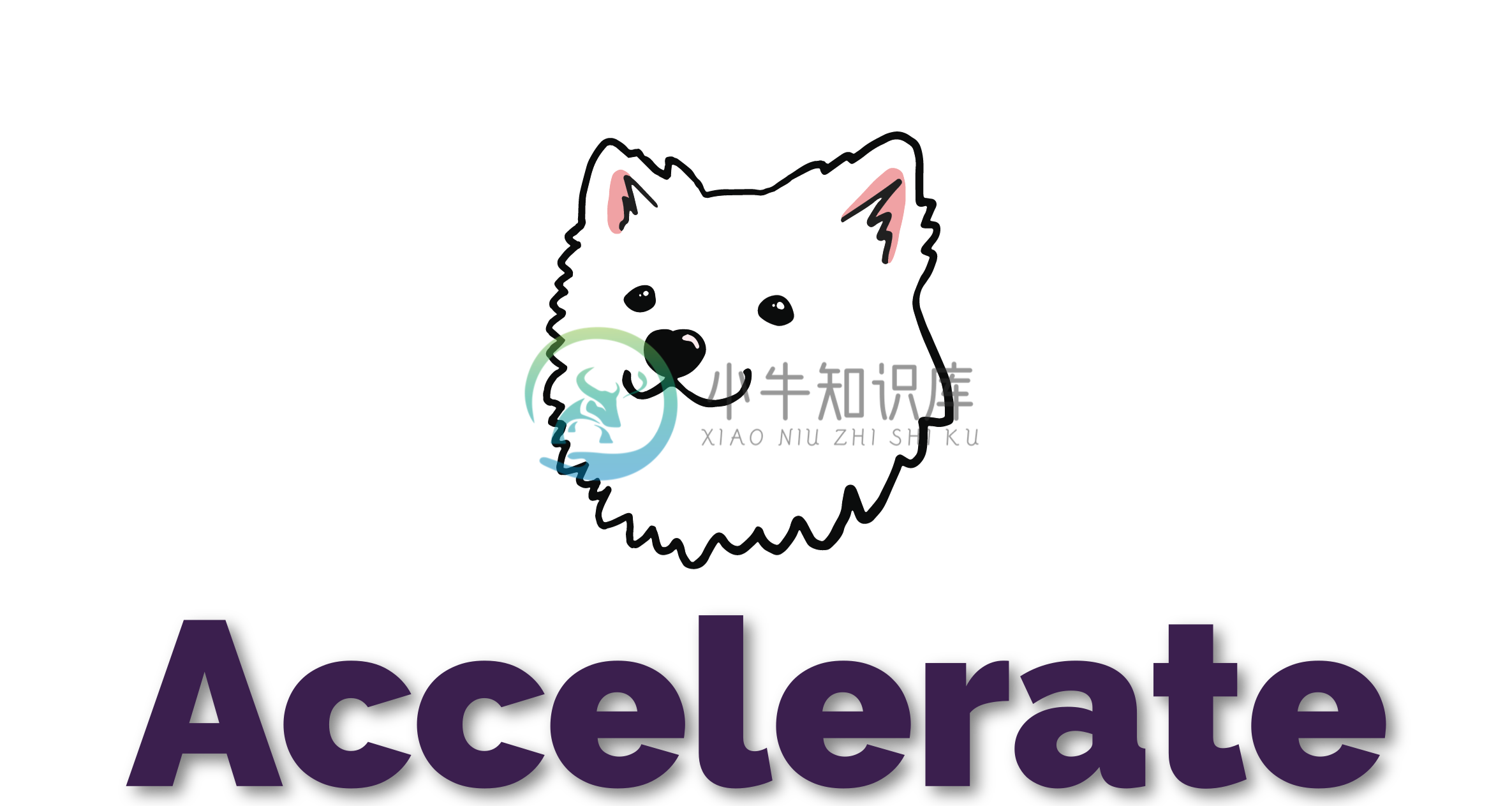This package compiles Accelerate code to LLVM IR, and executes that code onmulticore CPUs as well as NVIDIA GPUs. This avoids the need to go through nvccor clang. For details on Accelerate, refer to the main repository.
We love all kinds of contributions, so feel free to open issues for missingfeatures as well as report (or fix!) bugs on the issue tracker.
Dependencies
Haskell dependencies are available from Hackage, but there are several externallibrary dependencies that you will need to install as well:
LLVMlibFFI(if using theaccelerate-llvm-nativebackend for multicore CPUs)CUDA(if using theaccelerate-llvm-ptxbackend for NVIDIA GPUs)
Docker
A docker container is provided with this packagepreinstalled (via stack) at /opt/accelerate-llvm. Note that if you wish to usethe accelerate-llvm-ptx GPU backend, you will need to install the NVIDIAdocker plugin; see that page for moreinformation.
$ docker run -it tmcdonell/accelerate-llvm
Installing LLVM
When installing LLVM, make sure that it includes the libLLVM shared library.If you want to use the GPU targeting accelerate-llvm-ptx backend, make sureyou install (or build) LLVM with the 'nvptx' target.
Homebrew
Example using Homebrew on macOS:
$ brew install llvm-hs/llvm/llvm-9
Debian/Ubuntu
For Debian/Ubuntu based Linux distributions, the LLVM.org website providesbinary distribution packages. Check apt.llvm.org forinstructions for adding the correct package database for your OS version, andthen:
$ apt-get install llvm-9-dev
Building from source
If your OS does not have an appropriate LLVM distribution available, you can also build from source. Detailed build instructions are available on the LLVM.org website. Note that you will require at least CMake 3.4.3 and a recent C++ compiler; at least Clang 3.1, GCC 4.8, or Visual Studio 2015 (update 3).
Download and unpack the LLVM-9 source code. We'll refer tothe path that the source tree was unpacked to as
LLVM_SRC. Only the mainLLVM source tree is required, but you can optionally add other componentssuch as the Clang compiler or Polly loop optimiser. See the LLVM releasespage for the complete list.Create a temporary build directory and
cdinto it, for example:$ mkdir /tmp/build $ cd /tmp/buildExecute the following to configure the build. Here
INSTALL_PREFIXiswhere LLVM is to be installed, for example/usr/localor$HOME/opt/llvm:$ cmake $LLVM_SRC -DCMAKE_INSTALL_PREFIX=$INSTALL_PREFIX -DCMAKE_BUILD_TYPE=Release -DLLVM_ENABLE_ASSERTIONS=ON -DLLVM_BUILD_LLVM_DYLIB=ON -DLLVM_LINK_LLVM_DYLIB=ON
See options and variablesfor a list of additional build parameters you can specify.
Build and install:
$ cmake --build . $ cmake --build . --target install
For macOS only, some additional steps are useful to work around issues relatedto System Integrity Protection:
cd $INSTALL_PREFIX/lib ln -s libLLVM.dylib libLLVM-9.dylib install_name_tool -id $PWD/libLTO.dylib libLTO.dylib install_name_tool -id $PWD/libLLVM.dylib libLLVM.dylib install_name_tool -change '@rpath/libLLVM.dylib' $PWD/libLLVM.dylib libLTO.dylib
Installing Accelerate-LLVM
Once the dependencies are installed, we are ready to install accelerate-llvm.
For example, installation using stackjust requires you to point it to the appropriate configuration file:
$ ln -s stack-8.8.yaml stack.yaml
$ stack setup
$ stack install
Note that the version of llvm-hsused must match the installed version of LLVM, which is currently 9.0.
libNVVM
The accelerate-llvm-ptx backend can optionally be compiled to generate GPUcode using the libNVVM library, rather than LLVM's inbuilt NVPTX codegenerator. libNVVM is a closed-source library distributed as part of theNVIDIA CUDA toolkit, and is what the nvcc compiler itself uses internally whencompiling CUDA C code.
Using libNVVM may improve GPU performance compared to the code generatorbuilt in to LLVM. One difficulty with using it however is that since libNVVMis also based on LLVM, and typically lags LLVM by several releases, you mustinstall accelerate-llvm with a "compatible" version of LLVM, which will dependon the version of the CUDA toolkit you have installed. The following table showscombinations which have been tested:
| LLVM-3.3 | LLVM-3.4 | LLVM-3.5 | LLVM-3.8 | LLVM-3.9 | LLVM-4.0 | LLVM-5.0 | LLVM-6.0 | LLVM-7 | LLVM-8 | LLVM-9 | |
|---|---|---|---|---|---|---|---|---|---|---|---|
| CUDA-7.0 |
|
|
|||||||||
| CUDA-7.5 |
|
|
|
||||||||
| CUDA-8.0 |
|
|
|
|
|||||||
| CUDA-9.0 |
|
|
|||||||||
| CUDA-9.1 | |||||||||||
| CUDA-9.2 | |||||||||||
| CUDA-10.0 | |||||||||||
| CUDA-10.1 |
Where
The above table is incomplete! If you try a particular combination and find thatit does or does not work, please let us know!
Note that the above restrictions on CUDA and LLVM version exist only if youwant to use the NVVM component. Otherwise, you should be free to use anycombination of CUDA and LLVM.
Also note that accelerate-llvm-ptx itself currently requires at least LLVM-4.0.
Using stack, either edit the stack.yaml and add the following section:
flags:
accelerate-llvm-ptx:
nvvm: true
Or install using the following option on the command line:
$ stack install accelerate-llvm-ptx --flag accelerate-llvm-ptx:nvvm
If installing via cabal:
$ cabal install accelerate-llvm-ptx -fnvvm
-
3.4.4.3. 选择过程 3.4.4.3.1. 概述 现在我们先看一下下面这个MatcherTable的片段如何指引指令选择。 /*0*/ OPC_SwitchOpcode /*284 cases */, 41|128,120/*15401*/, TARGET_VAL(ISD::STORE),// ->15406 /*5*/ OPC_RecordMemRef, /*6
-
之前有朋友问到这个问题,是否有使用LLVM/Clang编译Linux内核的,随手找了一些相关资料,在这里贴出来,与大家共享。 项目简介: LLVMLinux Project Overview This project aims to fully build the Linux kernel using Clang which is the C front end for the LLVM comp







